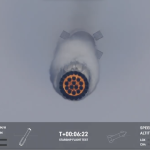If you’re trying to get a pulse on what’s happening in the venture market right now, you could do worse than talk with Hans Swildens, founder of the 22-year-old investment firm Industry Ventures.
Industry Ventures is now managing $5 billion in assets – nearly $1 billion of it raised last year — across numerous strategies and vehicles. The firm makes both direct investments and invests in venture funds. It participates in smaller tech buyouts. It’s a limited partner in others’ buyout funds. And it has a vibrant secondaries business, so it knows when people are open to selling stakes in companies, when they aren’t, and where the market is pricing pretty much everything.
We caught up yesterday with Swildens, whose firm has locations in London and Alexandria, Va., but who is based in San Francisco, where he spoke from his office near the iconic Transamerica Pyramid. Answering our questions, he talked animatedly about everything from VC distributions, to the secondaries market, to the reappearance of deal terms meant to protect investors (and that all but disappeared until recently, as VCs eager to close deals threw caution to the wind).
Below are some highlights from that chat, which offers a useful snapshot of current conditions that other investors – and founders – might benefit from knowing, even while Swildens himself offers that this moment could be a blip. For readers who work outside of VC, we’ve layered in some of our own notes in brackets to explain some of the terms he’s using.
TC: Since January, we’ve been hearing a lot of late-stage investors are more interested in publicly traded shares whose prices have nose-dived. Are you seeing a pullback in late-stage VC?
HS: With late-stage, pre-IPO unicorn rounds, we’re seeing them continue to get done but with structure.
You mean deal terms? What kind are you seeing?
Like one-and-a-half times investors’ money back, plus participation. [Translation: VCs are now asking for so-called preferred shares, where they get their money before anyone else gets paid — including the founders — in a liquidity event.]
Or senior 1.75x with an anti-dilution ratchet into an IPO. [Anti-dilution provisions are clauses that allow investors the right to maintain their ownership percentages in the event that new shares are issued.]
Or minimum compounded return hurdles of 20% IRR. [The hurdle rate is the minimum rate of return on an investment that will offset the investor’s costs. The basic gist here, of course, is that investors are starting to require downside protection.]
There’s a lot that happening at that stage of the market where the companies have maybe $100 million in revenue but their last round was done at a $5 billion valuation. So new financings are happening, but they’re happening with structure so that they look kind of like a high-yield debt-equity instrument.
When did these provisions start showing up in term sheets?
It started happening a month or two ago. In January, things were [still operating much as they have been]. And then February and March were the two months that people started experiencing daily declines in their public stock portfolios. About a month ago is when a lot of the crossover funds and hedge funds readjusted either where they were investing, or the terms and conditions of their financings. So mutual funds, hedge funds, private equity firms — they’re mostly dropping in structure into the securities now.
Are VCs not inserting these same terms in deals?
So far, we haven’t seen too many traditional funds like IVP, Meritech, DFJ Growth, [or] Iconiq drop in structures as much. I do think now that it’s happening and CEOs are agreeing to it and everyone else in the market who is a venture investor is seeing these securities, you’ll probably start seeing [the terms] popping up [including from] some of them. But a lot of the venture firms and the growth firms that are more venture-y have gone down market into Series B and C deals and avoiding these high-priced rounds.
We hear a lot about Tiger Global. How many players do you think have come into the market in recent years from the hedge fund world and other parts?
There are so many hedge funds with side funds that are 10-year-term crossover vehicles. There’s, like, 30 of them. Then on the private equity side, there are another 20 buyout funds or mutual funds that have growth teams. So that’s a good 50 to 75 folks that are dropping structure everywhere.
I think right now if you’re a CEO, and you raised your round and it was at [a valuation of] $10 billion and you have $100 million in revenue and you don’t need to raise financing, you’re not going to [raise again]. If you need to raise financing and you want to keep your ‘headline value’ where it is, there’s a 75% chance you’re going to do structure.
There are still up rounds happening, but most of the up rounds that have happened were already in process in Q4.
You’re an LP in other venture funds. What are you seeing from a returns perspective?
There’s been a massive decrease in venture fund stock distributions because all the stocks got hammered [and] venture funds just decide not to distribute when stocks are going [down]. Some [shares] are half of what they were in January right now, so all the venture funds are trying to determine whether they hold on or not and in general, they’ve been holding. Not many venture funds have done distributions during the last three months. It’s been a huge drop. We used to get distributions every other day. I’m in 450 venture funds, so I see like a third of the whole market as an LP, and we used to get a check every day, every other day. Now, in this quarter, it’s like one every two weeks; it’s an 80% to 90% drop from an exit distribution perspective, in both cash and stock distributions.
Wow, though in fairness, last year was very high comparatively in terms of distributions.
Last year was massive. Every day to every other day, you got stock — something got bought out or something went public. So in terms of LPs getting money back, this year has been bad. And then the stuff that [has] been distributed this year, most of it got cut in half. Didi and Robinhood were both distributions that happened in January, February — these were the two largest stock distributions this year [for many investors] — and Didi got unlocked and distributed at three to four bucks and now it’s two bucks; Robinhood [was distributed] at $15 and now it’s at $11 and its IPO price [in August] was $35.
Wearing your fund manager hat, are you doing the same, hanging onto your shares in hopes prices will rebound?
We had a policy last year where we auto sold stuff over a period of time, but at the end of last year and in January, when things started getting [more turbulent] and we didn’t know if the market was going to bounce back or not, we held two securities of meaningful value that we should have sold but we held and are still holding. So we’re kind of in the same boat, where we’ve got two things we’re holding on to that we don’t want to sell or distribute.
Are you seeing more opportunities to buy discounted secondary shares of companies or even fund portfolios given what happened in the first quarter?
Venture funds report [their net asset value] quarterly, and I’ve got Q4 [reports] across everything and I’m waiting for Q1 [reports, which reflect performance through March 31].
If a fund held public stocks – literally any of them during Q1 — it’s going to be a markdown on those things. But it’s not going to be reported into your capital account until a month or two from now. So we’re waiting to see how that all flushes out and [these other fund managers] want to see it flush out, too right?
I mean, if you own a house and it was worth ten million bucks in December, and now, four months later, it’s worth six million bucks, do you sell? You’d be like, ‘What happened? How can that be possible?’ If someone comes and buys your neighbor’s house for $5 million, though, you’re like, ‘Okay, I got it, right. It actually dropped. It was inflated.’”
Powered by WPeMatico





